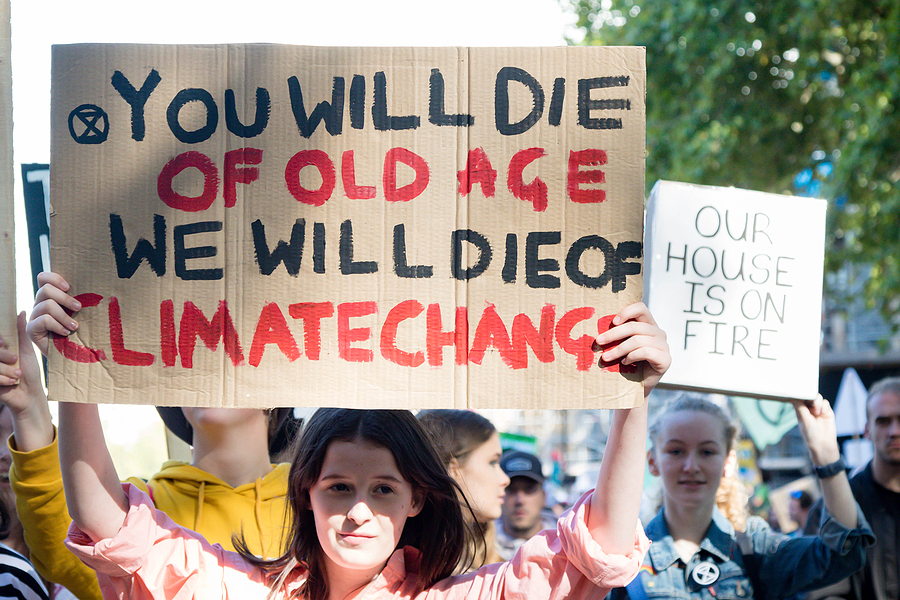
Food Purchases Are Now a Signal
September 21st, 2020 Posted by Emergent brand advocacy, brand marketing, brand messaging, Brand preference, brand strategy, branded content, Consumer insight, Content Marketing, engagement, Food Trend, Healthy lifestyle, Higher Purpose, Insight 0 comments on “Food Purchases Are Now a Signal”What we buy is a waving statement of belief
Once upon a time food was food. Might be indulgent food or healthy food, but its reason for being resided somewhere between enjoyment, sustenance or weight management. The world around us has shifted once again as cultural influences work to redefine the paradigm of what food purchases are really about.
The implications here for food and beverage marketing cannot be understated: you might agree relevance to consumer interests is paramount to communication effectiveness. Thus, the impact of cultural upheaval manifesting in consumers’ lives is critically important to strategy and gaining a meaningful connection with people.
Food purchase is a cultural expression of _____________.
In 2019 Deloitte published the results of a consumer survey that revealed an emerging trend in brand preference: people believe brands have a greater responsibility to act on purposeful issues. Concerns such as how companies treat employees, impact on the environment and the communities where they operate surfaced as emerging drivers of brand preference.
This followed another Deloitte study conducted in collaboration with the Food Marketing Institute (recently re-branded as The Food Industry Association), that showed for the first time in modern history the standard food and beverage purchase motivations of taste, price and convenience were being eclipsed by interest in transparency, health and wellness, visibility to the supply chain and food safety.
What’s happening is the socialization of food and its purchase.
Increasingly, food brand selection and purchase is a telegraph of personal values and beliefs. You might be wondering, what’s driving these changes. In the U.S. there are now over 21,000 food centric blogs, an astounding bit of evidence of how food culture has risen to lifestyle prominence in the lives of most people.
- Perhaps this was inevitable as consumers across all generational cohorts connected the dots between the quality of the food they consume and the quality of their lives. What is happening now is nothing short of revolutionary as the purpose of food acquires an even higher and symbolic purpose.
Food has always been important but now gains influence beyond consumption. People are emotional creatures and food is an emotional category that plays directly to human senses. Now, that significance is acquiring a new set of values that extends way past the physical aspects of the products’ use and roles in daily diet.
Wildfires and Green New Deal
When I was 16 my priorities were centered on how to go about buying a car and in doing so seal the path to my independence. Recently my 14-year old daughter announced her intentions to take assets from her babysitting earnings and donate them to organizations addressing hunger and racial inequality. Cultural and value changes reveal a different and more enlightened point of view on what matters. In turn, it is vital for brands and businesses to gain understanding on ‘mattering’ at a time when attitudes and importantly priorities are being reframed.
Generation Z is coming of age as an activist population focused on changing the way we live to take better care of the world around us. If you pay attention you hear the voices of concern rising around climate change and its rapidly building momentum to permanently alter the social and political landscape. Wildfires and super storms provide evidence that the way natural resources have been exploited has a serious downside. More specifically, how the food production, agricultural and energy industries are operating in service of convenience and consumption, and simultaneously exacting a horrible toll on the health of the planet and her inhabitants.
The Sunrise Movement and Green New Deal are being championed by the youngest generation. Their future quality of life may well depend on how fast changes can be created in the current systems that generate greenhouse gases fomenting weather related catastrophes, drought leading to fires, rising coastal water levels and the ongoing impact of melting polar ice caps.
Chief among the contributing threats to climate is the global food system and animal production in particular that collectively create more greenhouse gas than all worldwide transportation systems combined.
Generation Z now views purchase decisions as a path to creating a better world. In their view, if you’re not an active, visible part of the solution – your inaction is part of the problem.
“Power of the Purchase Order is Primal”
Errol Schweizer, producer of “The Checkout”, an industry trend watcher podcast, did a recent interview with Kevin Coupe’s Morning Newsbeat e-newsletter. Kevin asked, considering these societal changes on the horizon, what’s the one thing food retailers can do to build their relevance and value?
“Increase the amount of organic and regeneratively produced products that you sell. The organic trade association recently released a whitepaper that provided scientific proof organic agriculture can help mitigate the impact of climate change,” said Schweizer. He states this type of food production helps sequester carbon, reduces use of fossil fuels while also producing more nutrient dense food.
His call to action: keep growing your organic business. As a retailer you can do this, and it’s relevant to what people want anyway. He exhorts the retail purchase order can be a powerful instrument in helping answer the need for change. The cultural manifestations of food socialization are significant and will impact how retail strategy and brand building are conducted.
Food as a tool of self-definition
(The New) Brand Democracy:
I believe brands can be a powerful force for change.
I expect them to represent me and solve societal problems.
My wallet is my vote.
Increasingly, meaning is unearthed in consumption. Said another way, the food people choose is an advertisement of who they want to be and what they believe in. When purchases become a billboard for values, the marketing, product creation and innovation decisions need to reflect this insight.
Is it possible we are nearing an era when determining the contribution to greenhouse gas in production will matter as much as ingredient quality and nutrient density? The answer here is ‘yes’ and it’s coming more rapidly than previous developments such as the demand for greater transparency.
At Emergent, we suggest that successfully navigating these waters of change in human behavior can be best accomplished by brands and retailers who come to work bearing a soul – one that governs their actions and informs decisions.
When consumers see purchases as a path to creating a better world, it should play out in the brand voice, content marketing strategy and all that sits underneath.
Guidance to improved relevance in a time of cultural shift:
- Listening is important and should be formalized as a consistent undertaking to understand the development of emerging attitudes and opinions that impact how consumers see the role of brands in their lives.
- Building a higher purpose platform for the brand and business is now table stakes to continued relevance and connection with your users.
- Identify specific actions your business can take to address climate change including how your supply chains operate and the standards and certifications of performance you require for compliance.
- How can your brand contribute to the cultural conversation? What needs are you uniquely positioned to address?
- Tell your users what you’re doing an engage them in a dialogue on their views and opinions.
- Recognize that food is a tool of self-definition and a symbol to others of what your users think is important. How does this influence your messaging and social media strategies?
If you find this development challenging and want to consider a fresh approach, please use this link and let’s start a conversation about your questions and interests.
Looking for more food for thought? Subscribe to the Emerging Trends Report.
Bob Wheatley is the CEO of Chicago-based Emergent, The Healthy Living Agency. Traditional brand marketing often sidesteps more human qualities that can help consumers form an emotional bond. Yet brands yearn for authentic engagement, trust and a lasting relationship with their customers. Emergent helps brands erase ineffective self-promotion and replace it with clarity, honesty and deeper meaning in their customer relationships and communication. For more information, contact [email protected] and follow on Twitter @BobWheatley.

